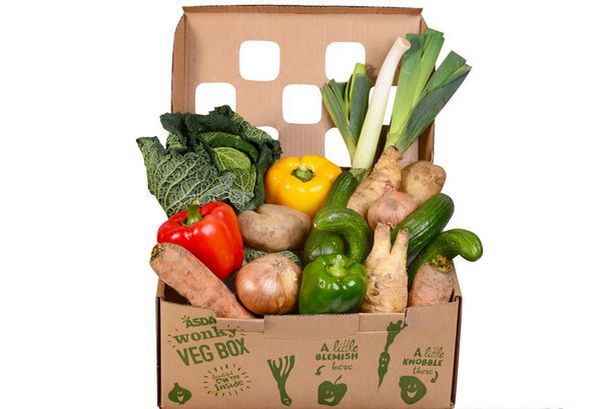If you have friends like mine then every now and then a picture of a wonky or very ugly looking vegetable pops up on Facebook and Twitter resulting in several comments and a giggle. Perhaps you have also seen the potato with two heads or the parsnip with two legs? For years we have rejected fruit and vegetables that look a bit odd. Supermarkets have refused to supply us with anything that doesn't look perfect. So in an age where we are rejecting airbrushing and saying no to waste, is it time to embrace ugly vegetables?
Food waste is a very big problem in the UK. Over 7 million tonnes of food is thrown away per year, with most of that coming from our own homes. If we are not throwing it away then suppliers are. A major contributor to food waste is the amount rejected due to its appearance... so called 'ugly produce'. This food is rejected before it even reaches the supermarket shelves, resulting in the wastage of millions of tonnes of perfectly edible produce.
To put this into perspective, the amount of food wasted could actually solve the food poverty crisis in the UK.
The average UK household wastes around 24 meals per month, which is a staggering amount when there are many people who don’t have enough food and are going to essential services such as food banks and shelters for support. This is the equivalent of up to £60 of food waste per month in some households - or one meal per day.
But food waste isn't just happening in our homes. The supermarkets play a huge role in the UK for contributing to the growing food waste problem. We are not just talking about food marked ‘out of date’ or ‘best before’. Supermarkets are concerned with whether a fruit or vegetable is aesthetically pleasing, prompting them to reject tons of ‘ugly’ but perfectly edible foods every day. This not only has an impact on the levels of waste but is also at a cost to the farmers and suppliers, who harvest the produce to meet the demands of the supermarkets.
In 2014 we spent time with farmers to understand the impact of food waste on their business. We visited a production facility in Lincolnshire and watched staff picking fruit and vegetables. In one afternoon we witnessed 1 in 3 items being rejected and cast aside because they would not be acceptable to their supermarket client. Simply put; they were too wonky, too ugly or not the right colour. This was not unique to this supplier. An estimated 20-40% of all fruit and veg produced in the UK is rejected for cosmetic reasons before it even reaches the supermarket shelves.
So it was with delight this week when we saw one supermarket 'embracing oddity'. Asda are trialling a vegetable box containing ‘odd’ looking vegetables at discounted prices, to test out the popularity. Asda's box, named ‘Beautiful on the Inside’ is proving quite popular. The box has gone viral on social media sites with many welcoming the new wonky veg box. At just £3.50 it is said to contain enough fresh vegetables to feed a family of four for a whole week.

Asda have also taken the decision to relax their specifications on acceptable carrot and sweet potato standards, to include an extra 340 tonnes of carrots and 300 tonnes of sweet potatoes respectively, which would previously have been refused. Finally - a supermarket willing to address food waste! But what has led to a change in heart?
Could it be because of a certain celebrity campaigner and chef? The move to 'wonky veg' appears to be on the back of a challenge laid down by Jamie Oliver and Jimmy Doherty, for supermarket giants to 'grow' its wonky vegetables range. A campaign has also been launched on the Change.org website, by thisisrubbish.org.uk calling for UK supermarkets to review their policies surrounding food waste and to commit to a target for reducing food waste and suddenly the public are aware now more than ever that waste is crippling our country.
The campaign currently has over 200,000 supporters, which is fantastic. All of whom want to see stores cut their food waste by 30% by 2025.
A similar concept running in Denmark has also caught our eye. Supermarkets are selling surplus foods to people who are 'waste-aware' or who might live in low income households. 'Wefood' as it is known, sells its produce at around 30-50% lower than the average supermarket prices.
But of course this won't work if we, the public, do not embrace oddity. Through clever marketing and a sense on need and community, we can persuade people to choose an ugly looking carrot over a 'perfect' looking version. But only if the price is right.
What are your thoughts on food waste? Would you eat 'ugly looking' vegetables? Or do you prefer your carrots to be straight and pointed? Let us know!

